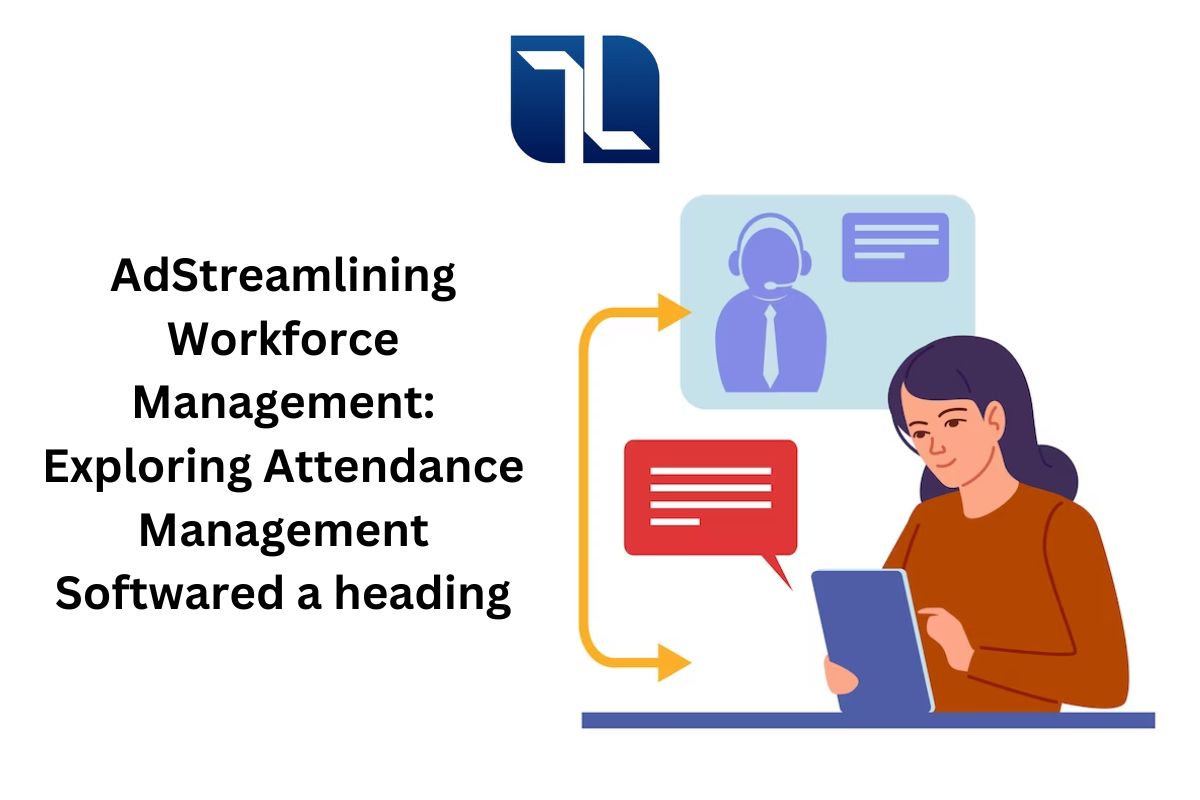Streamlining Workforce Management: Exploring Attendance Management Software

Introduction
In today’s fast-paced business landscape, effective workforce management is more important than ever. From tracking employee attendance to optimizing productivity, businesses are continually seeking solutions to streamline this essential aspect of their operations. Enter attendance management software – a powerful tool that can revolutionize the way companies track and manage their workforce.
With attendance management software, businesses can bid farewell to the outdated, manual methods of tracking employee attendance. By automating this process, companies can monitor attendance in real-time, eliminating the need for tedious paperwork and excessive administrative tasks. Not only does this improve accuracy and efficiency, but it also saves valuable time and resources.
But what exactly is attendance management software, and how can it benefit your business? In this article, we will delve deeper into this innovative solution, exploring its features, benefits, and best practices for implementation. Whether you’re a small business owner or an HR professional, this article is your comprehensive guide to understanding and utilizing attendance management software to optimize your workforce management strategy.
Discover the modern way to manage your workforce – read on to unlock the potential of attendance management software.
The Importance of Attendance Management
Ensuring that your employees are present and accounted for is a fundamental aspect of effective workforce management. Inaccurate attendance tracking can lead to payroll discrepancies, loss of productivity, and even legal issues. Attendance management software provides a reliable and efficient solution to this challenge.
By implementing attendance management software, businesses can automate the process of tracking employee attendance, ensuring accuracy and reliability. This software typically includes features such as biometric scanners, mobile apps, and web-based portals, allowing employees to easily clock in and out of work. Real-time data ensures that managers have access to up-to-date attendance records, enabling them to make informed decisions regarding staffing and resource allocation.
Additionally, attendance management software can help businesses comply with labor laws and regulations. By accurately tracking attendance, businesses can ensure that they are in compliance with laws regarding working hours, breaks, and overtime. This not only protects the rights of employees but also safeguards the business from potential legal liabilities.
Implementing a robust attendance management system demonstrates a commitment to fairness, transparency, and accountability within the organization. It fosters a culture of punctuality and professionalism, ultimately contributing to a more productive and engaged workforce.
Challenges with Traditional Attendance Management Methods
Traditional attendance management methods, such as manual time sheets and punch cards, are prone to errors, manipulation, and inefficiency. These methods require employees to manually record their working hours, which can easily lead to inaccuracies and discrepancies. Additionally, managing and processing the paperwork associated with these methods can be time-consuming and labor-intensive.
Moreover, traditional attendance management methods offer limited visibility and real-time insights into employee attendance. Managers often have to rely on manual calculations and data entry, which increases the risk of errors and delays in decision-making. This lack of real-time data can hinder effective workforce management, leading to suboptimal resource allocation and scheduling.
Furthermore, traditional attendance management methods are highly susceptible to fraud and time theft. Employees can easily manipulate time sheets or punch cards, leading to inflated hours worked or unauthorized overtime. This not only undermines the accuracy of attendance records but also contributes to increased labor costs for the business.
In summary, traditional attendance management methods are outdated, inefficient, and prone to errors and fraud. Adopting attendance management software can address these challenges, providing businesses with a seamless and reliable solution for tracking and managing employee attendance.
Benefits of Attendance Management Software
Attendance management software offers a wide range of benefits for businesses of all sizes and industries. Let’s explore some of the key advantages of implementing this innovative solution:
- Accuracy and Reliability: By automating attendance tracking, businesses can significantly reduce the risk of errors and discrepancies. Real-time data ensures that attendance records are up-to-date and accurate, enabling managers to make informed decisions based on reliable information.
- Time and Cost Savings: Attendance management software eliminates the need for manual paperwork and data entry, saving valuable time and resources. The automation of attendance tracking processes streamlines administrative tasks, allowing HR professionals to focus on more strategic initiatives.
- Improved Productivity: With attendance management software, businesses can easily identify attendance patterns and trends, enabling them to optimize resource allocation and scheduling. This ensures that the right employees are in the right place at the right time, maximizing productivity and efficiency.
- Streamlined Compliance: Attendance management software helps businesses comply with labor laws and regulations regarding working hours, breaks, and overtime. By accurately tracking attendance, businesses can avoid legal liabilities and ensure fair treatment of employees.
- Enhanced Employee Engagement: Attendance management software promotes a culture of punctuality and professionalism within the organization. By setting clear expectations and providing real-time feedback on attendance, businesses can foster a more engaged and accountable workforce.
In conclusion, attendance management software offers numerous benefits, ranging from improved accuracy and efficiency to enhanced productivity and compliance. Implementing this innovative solution can transform the way businesses track and manage their workforce, leading to significant improvements in overall performance.
Key Features to Consider When Choosing Attendance Management Software
Selecting the right attendance management software is crucial to ensure that it meets the specific needs and requirements of your business. Here are some key features to consider when evaluating different software options:
- Real-time Attendance Tracking: Look for software that provides real-time data on employee attendance. This ensures that managers have access to up-to-date information for effective decision-making.
- Multiple Clock-in Methods: Choose software that offers various clock-in methods, such as biometric scanners, mobile apps, and web-based portals. This allows employees to conveniently record their attendance from different devices and locations.
- Automated Reporting and Analytics: Look for software that generates comprehensive reports and analytics on attendance data. This enables managers to gain insights into attendance patterns, trends, and exceptions, facilitating informed workforce management decisions.
- Integration with Payroll Systems: Ensure that the attendance management software seamlessly integrates with your payroll system. This streamlines the process of calculating wages and eliminates the need for manual data transfer.
- Customizable Rules and Policies: Choose software that allows you to configure and enforce attendance rules and policies specific to your organization. This ensures that the software aligns with your unique requirements and promotes consistency in attendance management.
By carefully considering these features, you can select attendance management software that best aligns with your business goals and objectives.
How Attendance Management Software Improves Productivity
One of the key advantages of attendance management software is its ability to enhance productivity within the organization. Let’s explore how this innovative solution can contribute to improved efficiency and performance:
- Optimized Resource Allocation: Attendance management software provides real-time data on employee attendance, enabling managers to allocate resources more effectively. By identifying attendance patterns and trends, businesses can ensure that the right employees are scheduled for the right tasks at the right time, minimizing downtime and maximizing productivity.
- Reduced Absenteeism: Attendance management software helps businesses address the issue of absenteeism more effectively. By closely monitoring attendance, managers can identify patterns of frequent absences and take proactive measures to address the underlying causes. This can include providing additional support, implementing flexible working arrangements, or offering incentives for good attendance.
- Streamlined Leave Management: Attendance management software often includes features for managing various types of leave, such as vacation, sick days, and personal time off. By automating the leave management process, businesses can reduce the administrative burden on HR professionals and ensure accurate tracking of leave balances and approvals.
- Improved Accountability: Attendance management software promotes a culture of accountability within the organization. By setting clear expectations regarding attendance and providing real-time feedback, businesses can encourage employees to take ownership of their attendance and performance. This fosters a more engaged and motivated workforce, ultimately leading to increased productivity.
In summary, attendance management software plays a vital role in optimizing resource allocation, reducing absenteeism, streamlining leave management, and fostering accountability within the organization. By leveraging the power of this innovative solution, businesses can significantly enhance productivity and performance.
Case Studies: Success Stories of Companies Using Attendance Management Software
To further illustrate the benefits of attendance management software, let’s explore some real-life success stories of companies that have implemented this innovative solution:
- Company A: Company A, a manufacturing company with multiple locations, implemented attendance management software to address issues with inaccurate attendance tracking and excessive administrative tasks. By automating the attendance management process, the company significantly reduced errors and streamlined administrative tasks. This resulted in improved productivity, cost savings, and enhanced employee engagement.
- Company B: Company B, a retail chain with a large workforce, struggled with high levels of absenteeism and late arrivals. By implementing attendance management software, the company was able to closely monitor attendance patterns and identify areas of concern. Through targeted interventions, such as flexible scheduling and performance incentives, the company successfully reduced absenteeism, leading to increased productivity and customer satisfaction.
- Company C: Company C, a professional services firm, faced challenges with manual leave management processes and inaccurate leave balance calculations. By implementing attendance management software with integrated leave management features, the company eliminated the need for manual data entry and streamlined the leave approval process. This resulted in improved accuracy, reduced administrative burden, and enhanced employee satisfaction.
These case studies highlight the tangible benefits that attendance management software can bring to businesses across various industries. By effectively implementing this innovative solution, companies can achieve significant improvements in attendance tracking, productivity, and overall workforce management.
Implementation and Integration of Attendance Management Software
Implementing attendance management software requires careful planning and consideration. Here are some best practices to ensure a successful implementation and integration process:
- Needs Assessment: Begin by conducting a thorough assessment of your organization’s attendance management needs and requirements. Identify the specific challenges you are looking to address and the desired outcomes you hope to achieve. This will help you select the right software solution and customize it to your unique needs.
- Vendor Selection: Research and evaluate different vendors that offer attendance management software. Consider factors such as reputation, customer reviews, features, pricing, and customer support. Request demos and trials to get a firsthand experience of the software’s capabilities.
- Data Migration: If you are transitioning from manual attendance tracking methods or a different software system, ensure a smooth data migration process. Work closely with the software vendor to transfer existing attendance data accurately and securely.
- Training and Education: Provide comprehensive training to HR professionals, managers, and employees on how to effectively use the attendance management software. This will ensure a smooth transition and maximize the benefits of the software.
- Integration with Existing Systems: Ensure that the attendance management software seamlessly integrates with your existing HRIS (Human Resources Information System), payroll system, and other relevant software. This will streamline data exchange and avoid duplicate data entry.
- Change Management: Implementing attendance management software may require a change in established processes and workflows. Communicate the benefits of the new system, address any concerns or resistance, and provide ongoing support to ensure a smooth transition.
By following these best practices, businesses can successfully implement attendance management software and maximize its benefits for workforce management.
Common Misconceptions About Attendance Management Software
Despite the numerous benefits, there are some common misconceptions surrounding attendance management software. Let’s debunk some of these misconceptions and provide clarity on the realities of this innovative solution:
- Misconception: Attendance management software is only suitable for large organizations. Reality: Attendance management software is beneficial for businesses of all sizes. Small and medium-sized businesses can also reap the benefits of automation, accuracy, and productivity improvements offered by this software.
- Misconception: Attendance management software is expensive and not cost-effective. Reality: While there may be some upfront costs associated with implementing attendance management software, the long-term savings and productivity gains outweigh the initial investment. Additionally, many software vendors offer flexible pricing options to suit different budgets.
- Misconception: Attendance management software is complicated to use and requires extensive IT knowledge. Reality: Attendance management software is designed to be user-friendly and intuitive. Most software vendors provide comprehensive training and support to ensure that users can easily navigate and utilize the software’s features.
- Misconception: Attendance management software invades employee privacy. Reality: Attendance management software focuses on tracking attendance during work hours and does not invade employee privacy outside of working hours. The software complies with data protection regulations and ensures that employee privacy is safeguarded.
It is important to debunk these misconceptions and understand the true value and potential of attendance management software in optimizing workforce management.
Future Trends in Attendance Management Software
As technology continues to evolve, attendance management software is expected to undergo further advancements and enhancements. Here are some future trends to watch out for:
- Artificial Intelligence (AI) Integration: AI-powered attendance management software can analyze attendance data to identify patterns, trends, and anomalies. This can help businesses proactively manage attendance issues and predict future staffing needs.
- Mobile Workforce Solutions: Attendance management software is likely to include features that cater to remote and mobile workers. This can include GPS tracking, geofencing, and mobile app-based clock-ins to ensure accurate attendance tracking regardless of location.
- Blockchain Technology: Blockchain-based attendance management software can offer enhanced security and transparency in attendance records. This technology ensures that attendance data is tamper-proof, providing a higher level of trust and reliability.
- Biometric Authentication: Biometric authentication methods, such as fingerprint or facial recognition, are likely to become more prevalent in attendance management software. This provides a secure and convenient way for employees to clock in and out, eliminating the need for physical badges or cards.
- Integration with Workforce Analytics: Attendance management software is expected to integrate more seamlessly with workforce analytics tools. This will enable businesses to gain deeper insights into attendance data and its impact on overall workforce performance.
By staying informed about these future trends, businesses can leverage the latest advancements in attendance management software to further optimize their workforce management strategies.
Conclusion
Effective workforce management is crucial for businesses to thrive in today’s competitive landscape. Attendance management software provides a powerful solution to streamline the tracking and management of employee attendance. By automating this process, businesses can improve accuracy, efficiency, and productivity while saving valuable time and resources.
In this article, we explored the importance of attendance management, the challenges with traditional methods, and the numerous benefits of attendance management software. We discussed key features to consider when selecting a software solution and how it can improve productivity within the organization. Real-life case studies highlighted the success stories of companies that have implemented attendance management software.
We also provided best practices for implementing and integrating attendance management software, debunked common misconceptions, and




